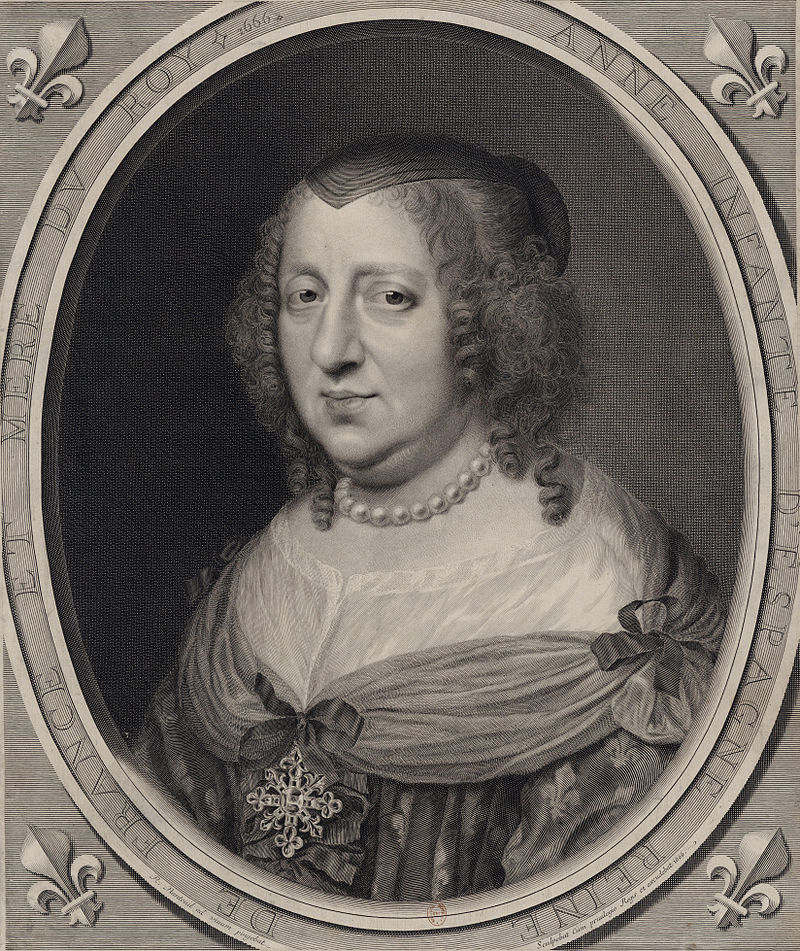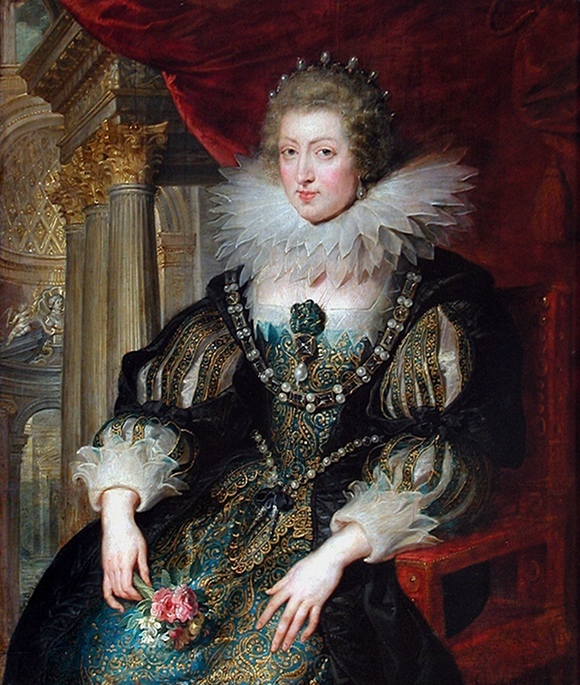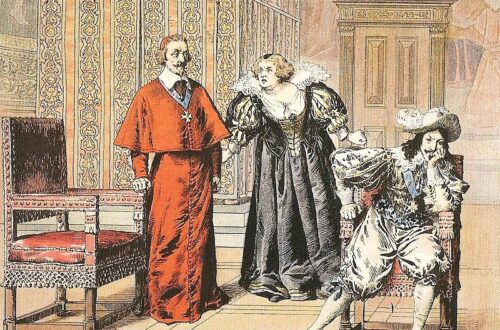The death of Anne d’Autriche
After the death of Mazarin in early 1661 and the following Taking of Power of Louis XIV, the Queen-Mother, Anne d’Autriche, decided to say goodbye to a life of politics and retired to the convent of Val-de-Grâce, which she founded in 1621. She did not fully vanish from the public eye and still took place in court-life, mostly at ceremonies or visits to Versailles, but Anne’s main focus shifted to religion.

Anne d’Autriche had been blessed with relatively good health during her years as Queen and later Regent. That changed in late 1663, with a general feeling of indisposition, and, to the great shock of her sons and the court, the Queen-Mother was diagnosed with breast cancer in November 1664.
The tumor in her left breast grew rapidly and left the physicians helpless, for it was not something they knew a cure for. In order to treat her, Anne d’Autriche was brought from Val-de-Grâce to Saint-Germain-en-Laye. The physicians knew of several treatments which could be applied, but none promised success. Cancer was considered a mysterious illness that nobody could fully explain or understand. Thus the usual remedies were applied first, namely bloodletting. It did Anne no good, of course. Her breast was inflamed and her body fighting the tumor, the bloodletting only weakened her further.
The first option the physicians considered to cure the Queen-Mother, was to amputate the left breast… a risky move. In fact so risky, the physicians decided against it out of fear the large wound would become gangrenous. The chance for Anne d’Autriche to survive amputation and possible infection in her already weakened state, they figured, was nearly zero.
And so, the physicians decided, instead of amputation, to cut little by little of the Queen-Mother’s breast away, while also trying other cures known to them.
The cutting, of course, put Anne d’Autriche in terrible agony and caused an inflammation, in the whole breast. In an attempt to stop the tumor from growing, the physicians punctured it to insert hemlock, which was thought to cool the body and thus sort of freeze the spreading of a disease. A cure somewhat similar to the one they considered next. It was thought cancer needed something to feed on and to prevent it from feeding on a person, one treatment for tumors was to pierce them and insert beef or pork, in the believe the cancer would then feed on said beef or pork.
Other attempted cures, were a salt from Lake Erie, brought from a priest from Orléans, and an ointment made from belladonna and rock ash from Beauce, provided by another priest.

Anne’s condition worsened quickly. On top of the inflammation of her breast, caused by the tumor and cutting, she was also diagnosed with Erysipelas in May 1665. Erysipelas is a common bacterial infection of the superficial layer of the skin that can occur anywhere on the body. In Anne’s case, it was on her arm and shoulder. The physicians decided to treat it by cutting it open, but it brought her more pain than relief.
Finally, as the inflammation became so bad that the Queen-Mother’s rooms smelled like rotten meat and all ointments, some containing lime, showed no success, the physicians decided there was no way past complete amputation. Like the painful cuttings before, Anne also took this procedure, during with her breast was sliced off to the bone, with all the grace she could muster. Anne was brought to the Louvre and if not attended by the physicians, spent her time with prayer and repentance, or in company of her sons. She talked for long hours with the King and Monsieur, who could hardly endure to see her in so much agony.
The Queen-Mother survived the amputation, but shortly after it was discovered the cancer also spread to her right breast and lungs. Weakened as she was, it was clear she would not survive another amputation… nor, after all the pain thus far, would she agree to the procedure. “I can’t take it anymore.”
Her sons were in tears as it became clear, at the start of 1666, that the Kingdom would soon lose a great woman. Anne’s condition declined steadily over the course of January 1666. Knowing that she would soon lose consciousness, she said her good-byes on the 18th January, as the court was parading past her bed. A Queen’s death was as much of a public event as a Queen giving birth. She received extreme unction the following evening. The pain the Queen-Mother was in during her last hours was extreme. The King nearly fainted seeing his mother like this and was removed from the room, ordering his brother to do likewise… but Monsieur refused to do so. Anne lost consciousness after midnight and died at around five o’clock in the morning of the 20th January 1666.
Anne d’Autriche was buried at Saint-Denis and her heart, according to her own wishes, brought to église Notre-Dame du Val-de-Grâce, to rest among the other 45 embalmed hearts past Kings and Queens of France. Louis XIV forever treated the day his mother died in the special way: he retired early and no balls, salons or other amusements were held on the anniversary of her death.
“Ce fut une grande Reine! Non, plus qu’une grande Reine, elle fut un grand Roi.” ~ Louis XIV






One Comment
Tess
Poor Anne… I feel sick just reading about this treatment.